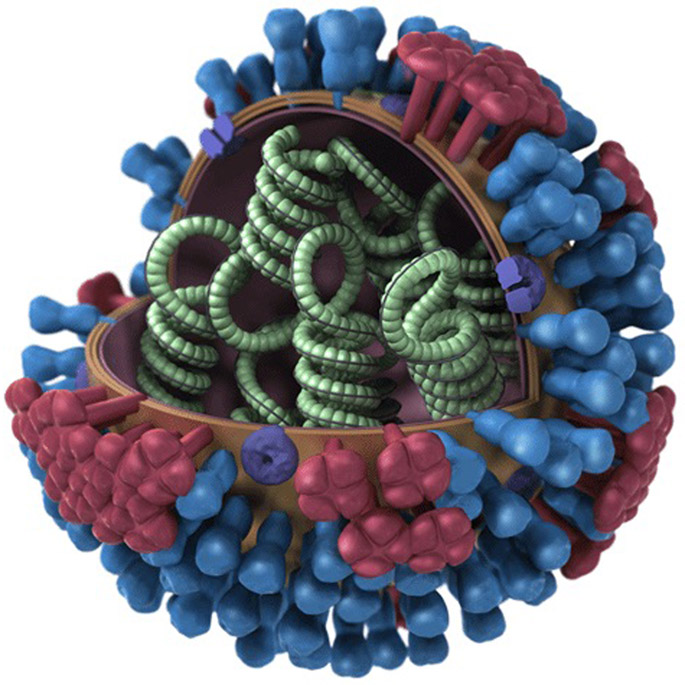by Leigh MacMillan

The viral genome of influenza A — the primary cause of seasonal flu epidemics — is composed of eight RNA segments that are each encapsulated by many copies of viral nucleoprotein (NP).
Evidence suggests that a host cell factor called UAP56, which has critical roles in RNA processing and export from the nucleus, facilitates encapsulation of viral RNA by NP, but the mechanism is not clear.
Yi Ren, PhD, and colleagues have now characterized the interaction between NP and UAP56 using recombinant proteins and mass spectrometry. They demonstrated that UAP56 features two NP binding sites. One of the sites, which was previously unknown, is in the N-terminal extension of UAP56 and recognizes the RNA-binding region of NP.
Their report in Biochemical and Biophysical Research Communications reveals the molecular basis for how UAP56 acts on RNA-free NP. The findings provide new insights into NP-mediated influenza genome packaging, which is critical for the virus life cycle and its ability to cause infection.
This research was supported by National Institutes of Health grant GM133743 and by funds from Vanderbilt University School of Medicine.












